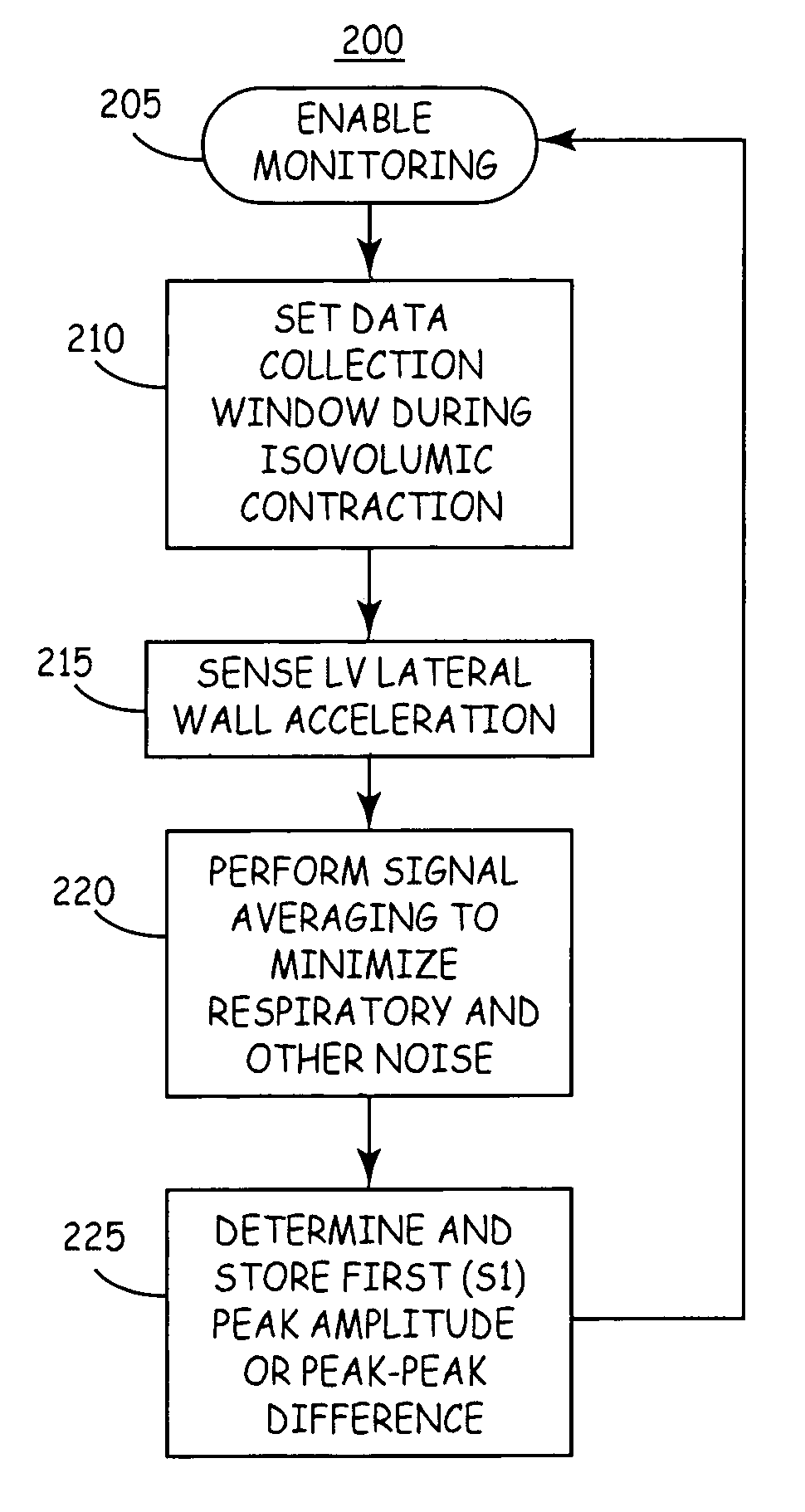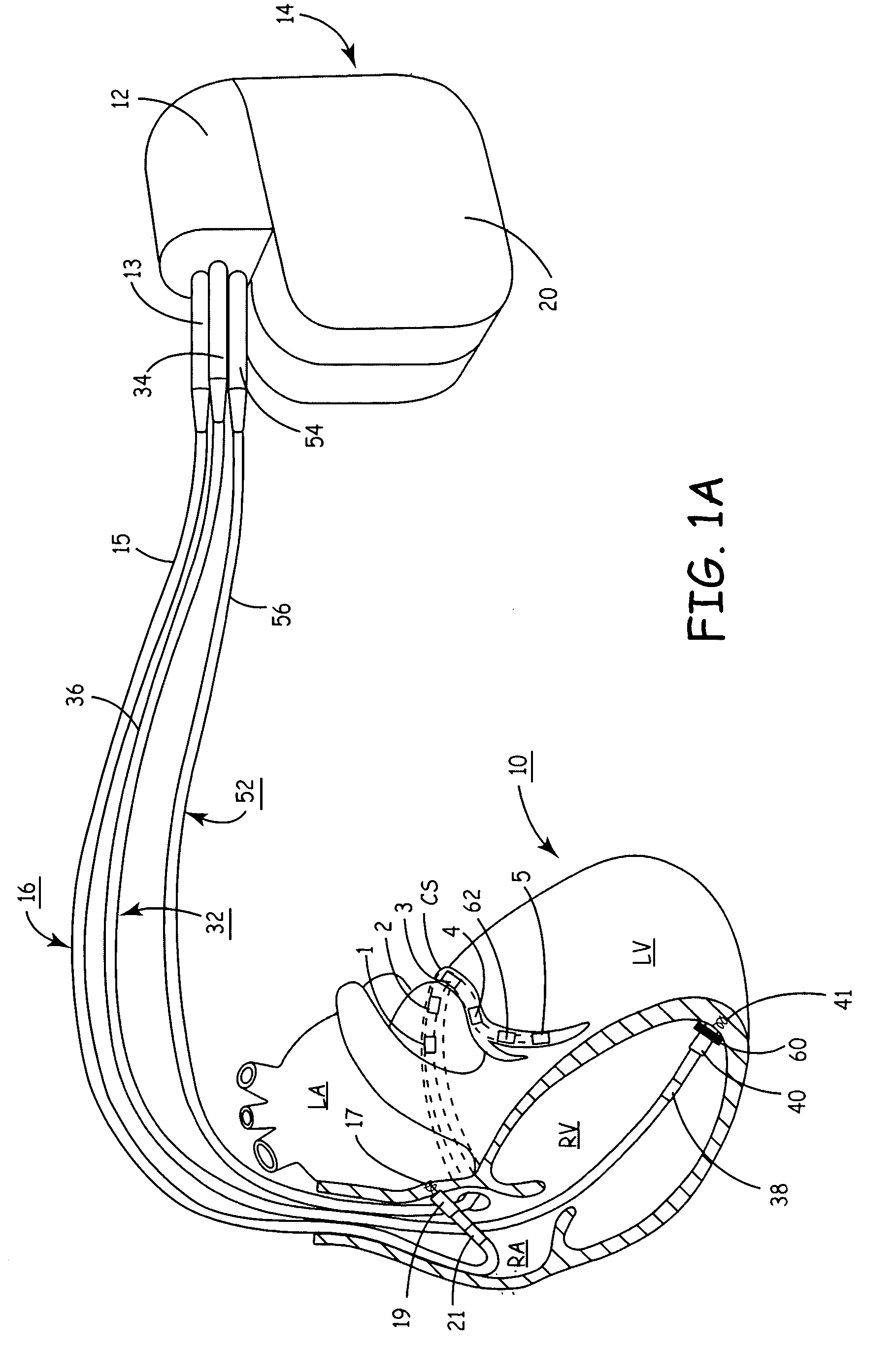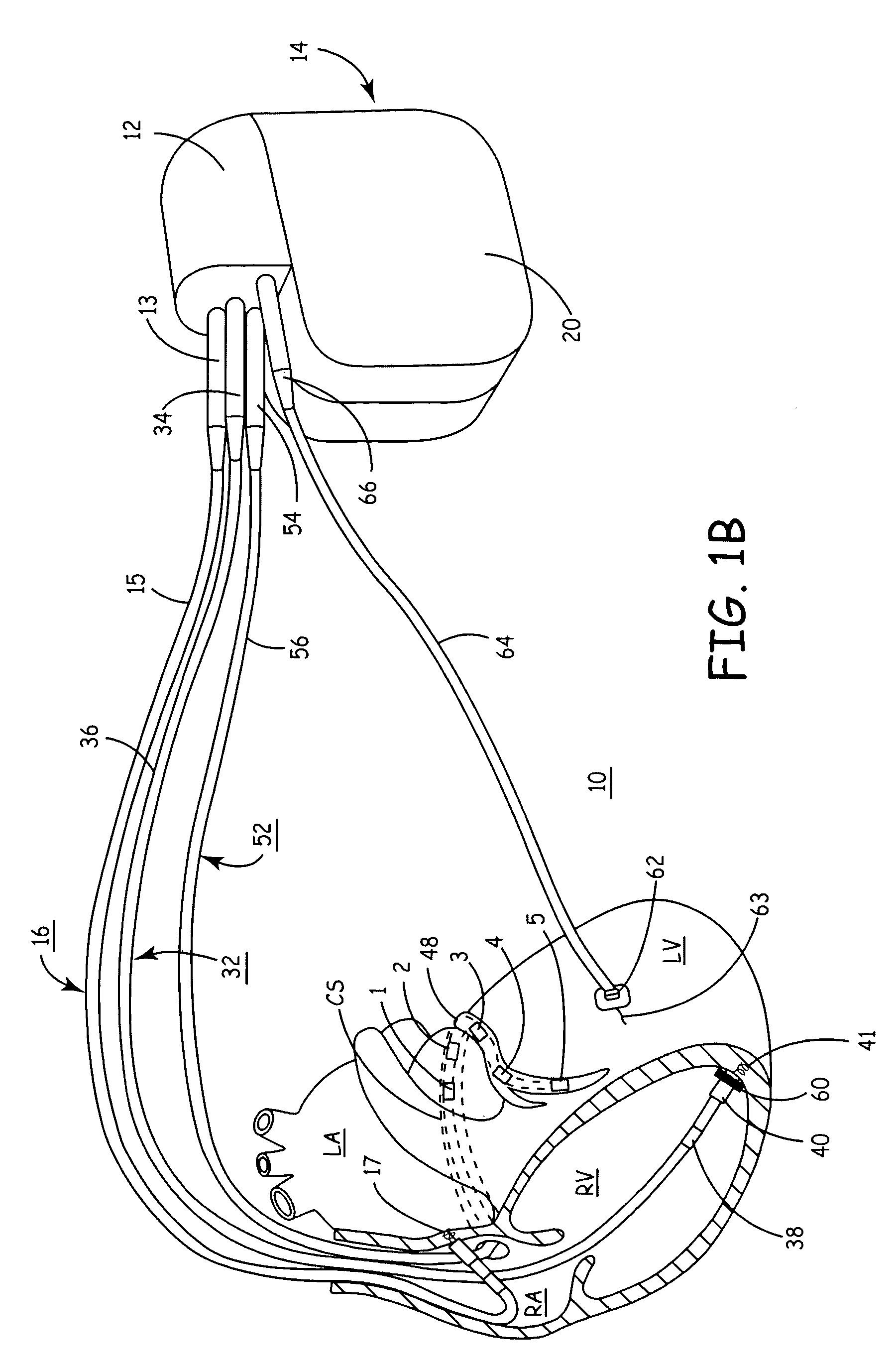Reconfigurable, fault tolerant multiple-electrode cardiac lead systems
a multi-electrode, fault-tolerant technology, applied in the field of reconfigurable, fault-tolerant medical electrical lead systems, can solve the problems of reduced ventricular asynchrony, hemodynamic insufficiency may require clinical intervention, and reduced ventricular contractile strength ability, etc., to achieve the effect of complex
- Summary
- Abstract
- Description
- Claims
- Application Information
AI Technical Summary
Benefits of technology
Problems solved by technology
Method used
Image
Examples
Embodiment Construction
[0044] The present invention provides a method and apparatus for assessing ventricular function on a chronic basis using a plurality of electrodes disposed in operative electrical communication proximate the LV. For certain methods according to the present invention at least one remote electrode disposed outside the LV is desirable (e.g., a canister-based, subcutaneous, pericardial, epicardial, coil type, RA, LA, or RV electrode, etc.). Optionally, at least one mechanical or metabolic sensor also operatively electrically couples to an implantable medical device (IMD) and provides cardiac performance information which can be used in conjunction with the multiple electrode lead system of the present invention.
[0045] The plurality of electrodes are spaced-apart so that a single electrode is disposed in electrical communication with a discrete volume of ventricular tissue. In one embodiment, the discrete volume of tissue is divided by planes as is known and used in the medical arts (e....
PUM
 Login to View More
Login to View More Abstract
Description
Claims
Application Information
 Login to View More
Login to View More - R&D
- Intellectual Property
- Life Sciences
- Materials
- Tech Scout
- Unparalleled Data Quality
- Higher Quality Content
- 60% Fewer Hallucinations
Browse by: Latest US Patents, China's latest patents, Technical Efficacy Thesaurus, Application Domain, Technology Topic, Popular Technical Reports.
© 2025 PatSnap. All rights reserved.Legal|Privacy policy|Modern Slavery Act Transparency Statement|Sitemap|About US| Contact US: help@patsnap.com



